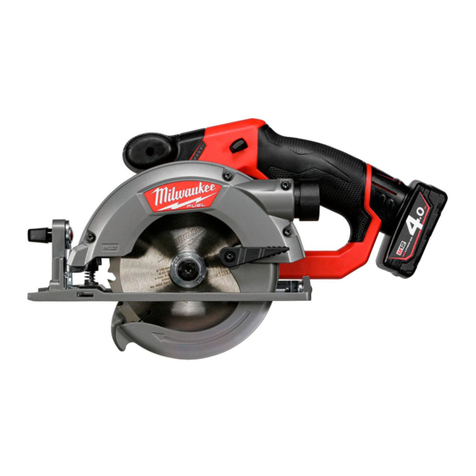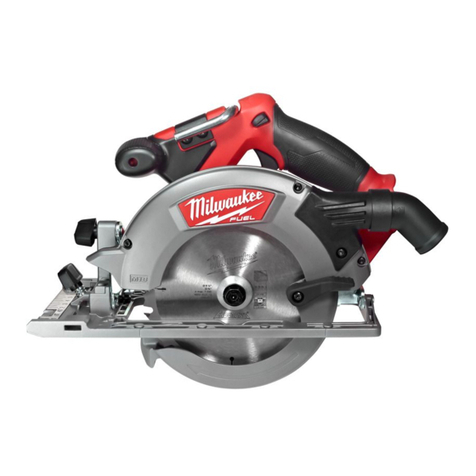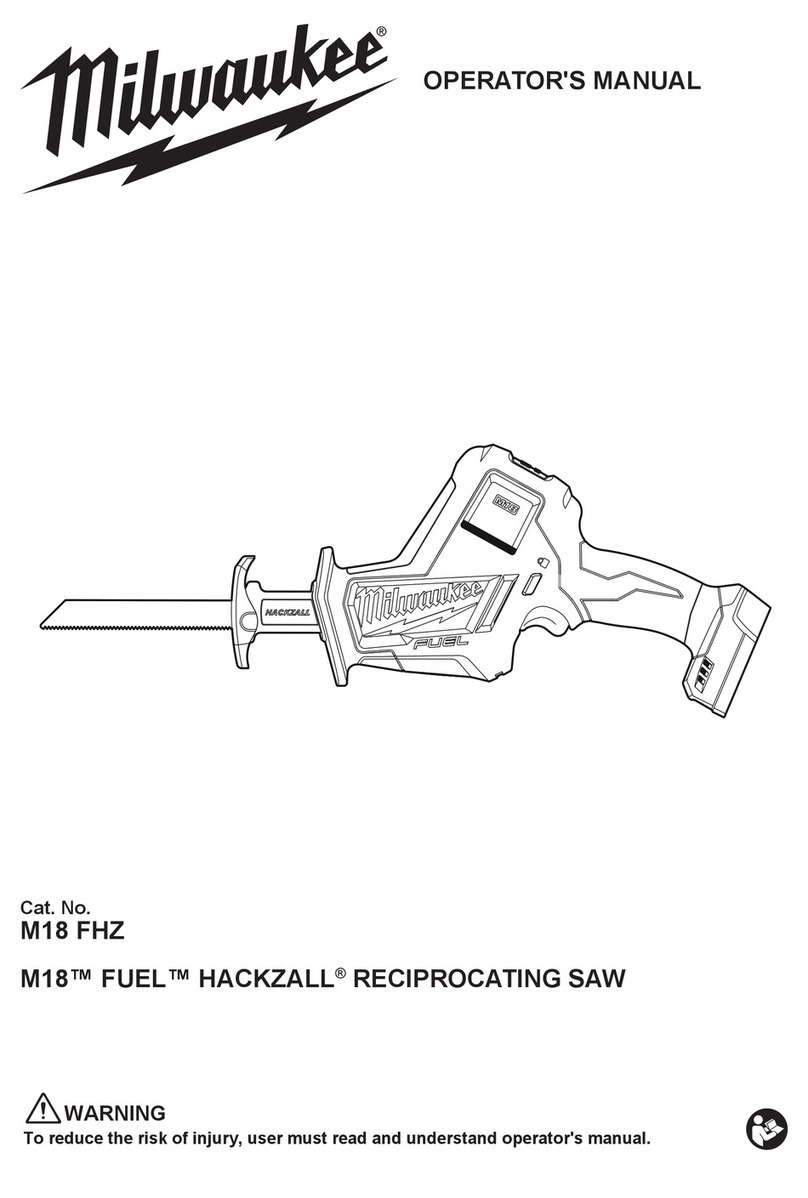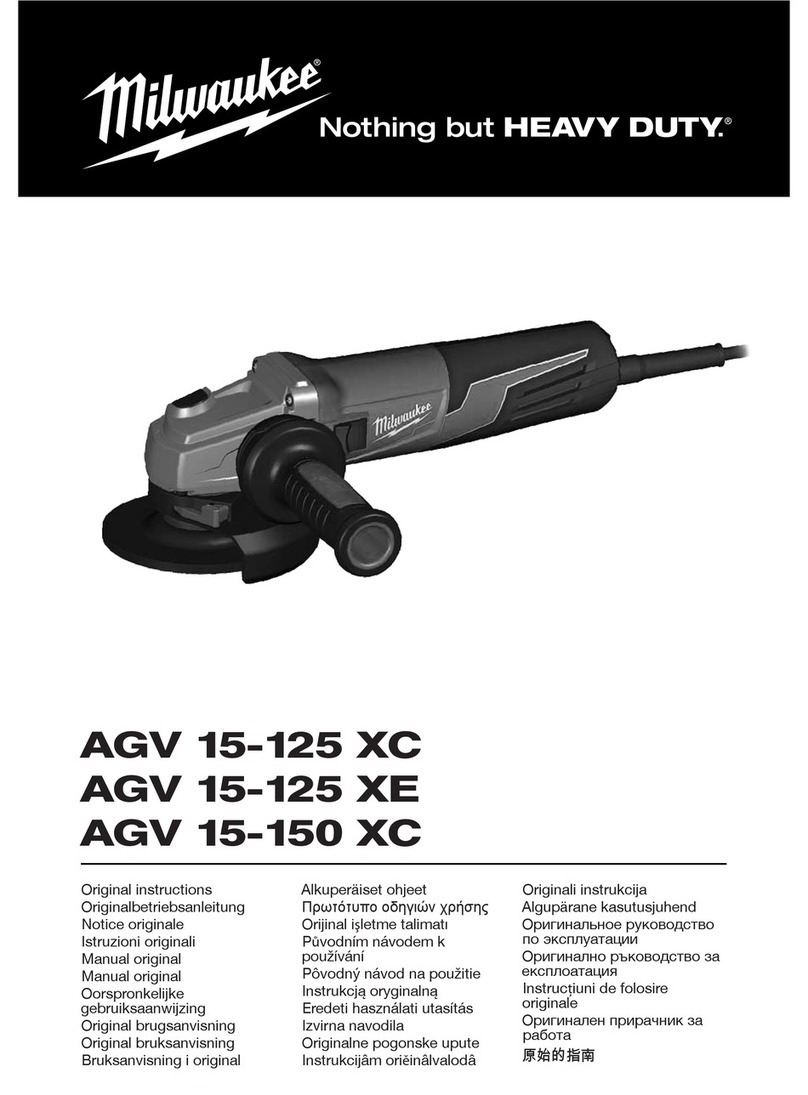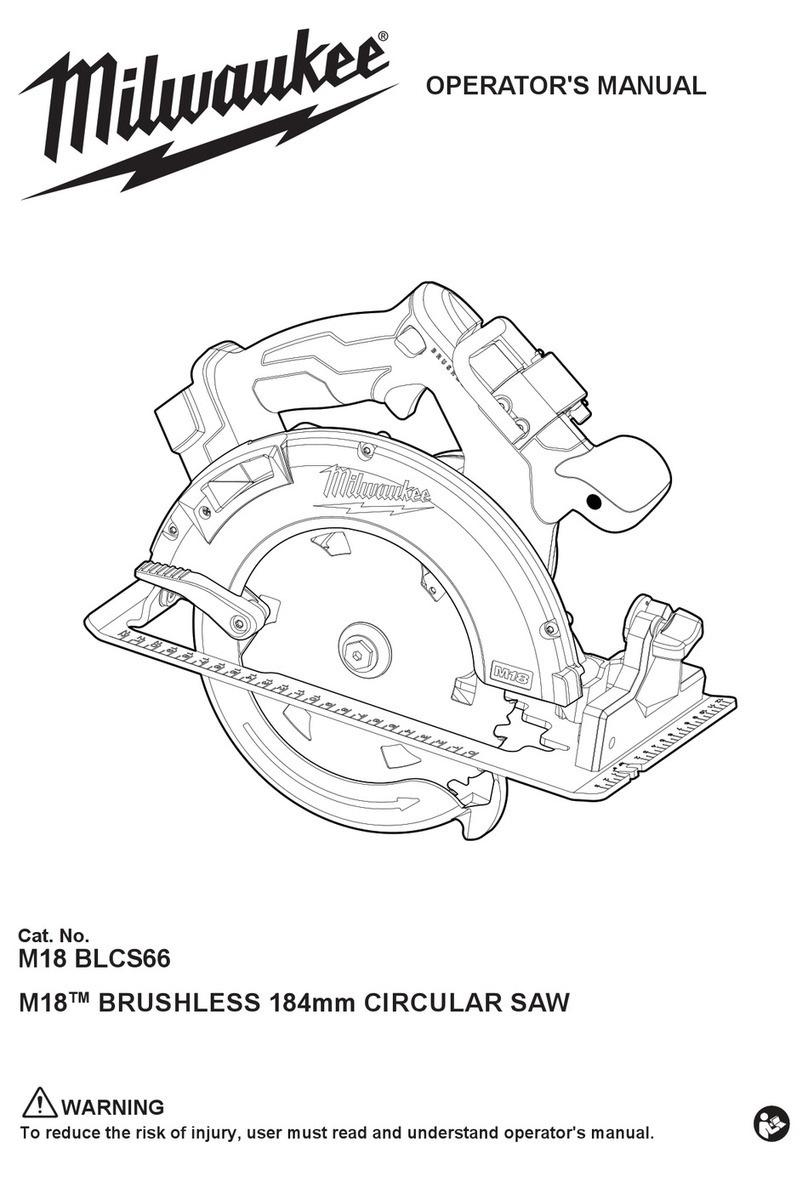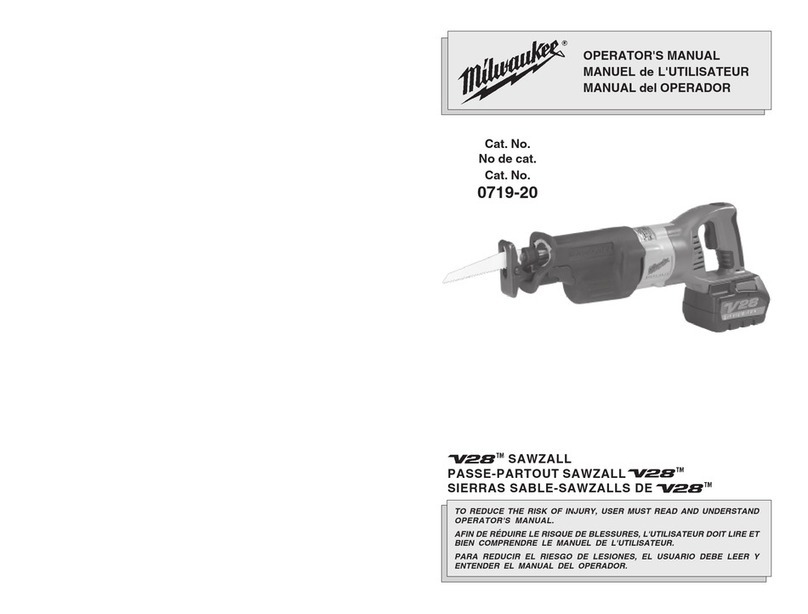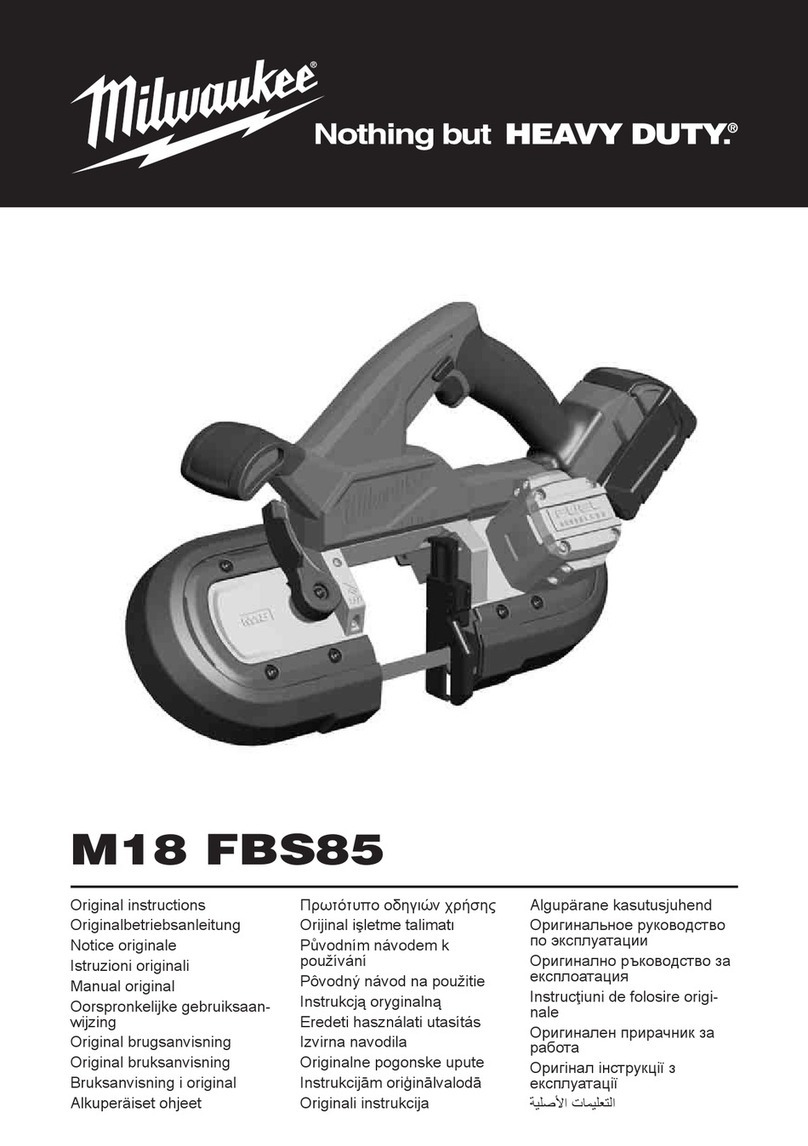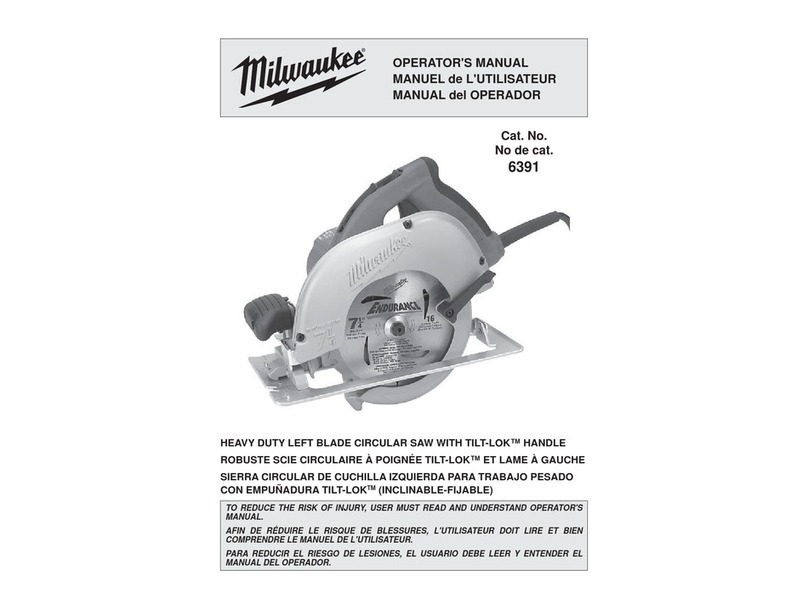
4
•
•
•
•
•
Battery operated units do not have to be plugged
into an electrical outlet; therefore, they are always
in operating condition. Be aware of possible haz-
ards even when unit is not operating.
Save these instructions. Refer to them frequently
and use them to instruct others who may use this
product. If you loan someone this product, loan them
these instructions also.
After each use, clean the machine with a soft dry
cloth. Remove any chips, dirt and debris in the
battery bay.
Follow the manufacturer’s sharpening and main-
tenance instructions for the saw chain. Decreas-
ing the depth gauge height can lead to increased
kickback.
WARNING
Some dust created by power sanding,
sawing, grinding, drilling, and other
construction activities contains chemicals known to
cause cancer, birth defects or other reproductive harm.
Some examples of these chemicals are:
•lead from lead-based paint
•crystalline silica from bricks and cement and other
masonry products, and
•arsenic and chromium from chemically-treated lumber.
Your risk from these exposures varies, depending on
•
•
how often you do this type of work. To reduce your
exposure to these chemicals: work in a well ventilated
area, and work with approved safety equipment, such
as those dust masks that are specially designed to
fatigue, which could lead to heat stroke. During
weather that is hot and humid, heavy work should be
•
•
•
•Heavy protective clothing may increase operator
•
•
scheduled for early morning or late afternoon hours
when temperatures are cooler.
Always be aware of what you are doing when
using the pruning saw. Use common sense. Do
not operate the pruning saw when you are tired, ill, or
Keep all parts of your body away from the saw
chain when the unit is running.
Never let anyone use your pruning saw who has
not received adequate instructions in its proper
use. This applies to rentals as well as privately owned
saws.
•Before you start the unit, make sure the saw chain
is not contacting any object.
•Stop the pruning saw before setting it down.
•Maintain the unit with care. Keep the cutting edge
sharp and clean for best performance and to reduce
the risk of injury. Follow instructions for lubricating
and changing accessories.
• -
ing surfaces. If an operation cannot be performed
safely with two hands on the saw, USE EXTREME
CAUTION.
•
•
Do not cross arms or overreach.
Always cut away from yourself.
ing cut.
•
•During operations where it is necessary to use
one hand, such as to steady or control the work-
piece/branch, guide workpiece away from you, or
provide better visibility to the work area:
• Keep free hand clear of the chain and out of the
cutting path.
•
"skating" or "bouncing" of the saw.
• Never cut above shoulder height.
• -
•
•
•
Do not operate a pruning saw that is damaged, im-
properly adjusted, or not completely and securely
assembled. Chain should slow to a stop when the
switch trigger is released. If the chain continues to
turn after the switch trigger has been released, have
the unit serviced by an authorised service centre.
Do not force the pruning saw. The job can be
performed better and safer at the rate for which it
was intended.
Use extreme caution when cutting thin branches,
vines or small underbrush. The slender material
may catch the saw chain and be whipped toward you
trimmers or brush cutters for these operations.
Dress Properly - Wear snug fitting clothing.
Always wear heavy, long pants, long sleeves,
overalls, jeans or chaps made of cut resistant
material or ones that contain cut resistant inserts.
Wear non-slip safety footwear. Wear non-slip
heavy duty gloves to improve your grip and to
protect your hands. Do not wear jewellery, short
pants, sandals, or go barefoot. Do not wear loose
fitting clothing, which could be drawn into the
motor or catch the chain or underbrush. Secure
hair so it is above shoulder level.
Always wear proper eye protection with side
shields, marked to comply with AS/NZS 1337.1
when operating the pruning saw.
Maintain labels and nameplates. These carry
important information. If unreadable or missing,
contact a MILWAUKEE®service facility for a
replacement.
To reduce the risk of fire,
ADDITIONAL BATTERY SAFETY RULES
WAR
NING
personal injury , and product damage due to a
short circuit, never immerse your tool, battery
pack or charger in fluid or allow a fluid to flow
inside them. Corrosive or conductive fluids,
such as seawater , certain industrial chemicals,
and bleach or bleach-containing products, etc.,
can cause a short circuit.
WAR
NING
Do not charge
non-rechargeable batteries.
Always use common sense and be cautious
when using tools. It is not possible to anticipate
every situation that could result in a dangerous
outcome. Do not use this tool if you do not
understand these operating instructions or you feel
the work is beyond your capability; contact
MILWAUKEE®Tool or a trained professional for
additional information or training.
Always use the right product for your
application. The pruning saw should be used for
cutting wood only. Never use the pruning saw to
cut metal, plastic, masonry or non-wood building
materials.
Store pruning saw when not in use. Pruning saw
should be stored in a dry and high or locked area
out of the reach of children. When storing pruning
saw place the scabbard on the bar and chain.





